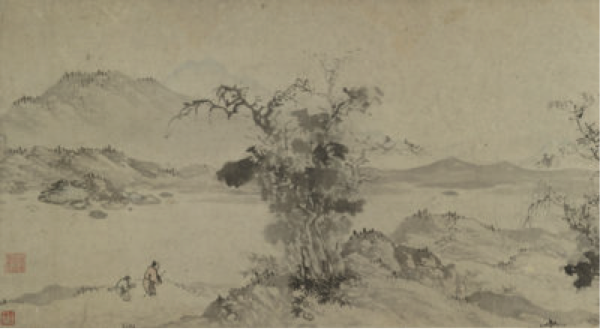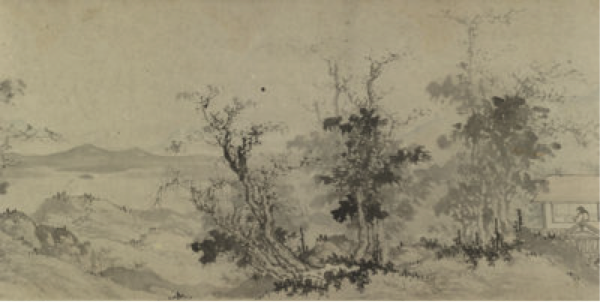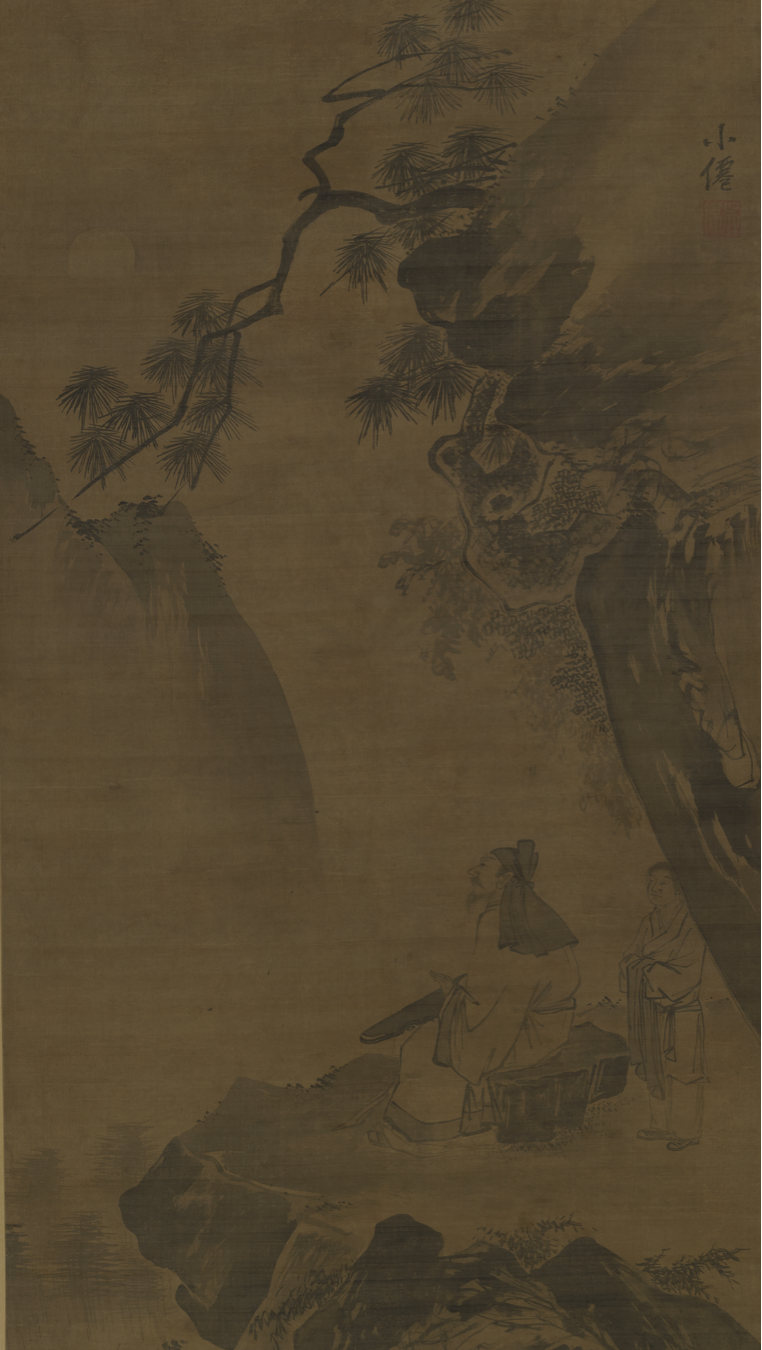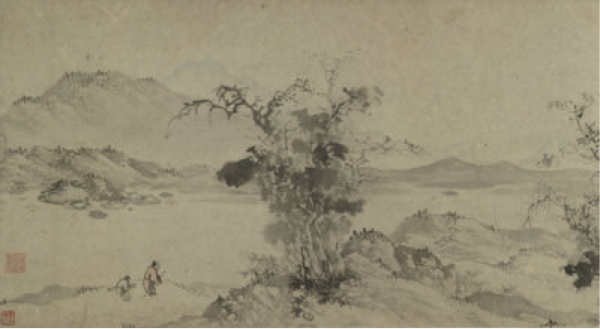In the exhibition Ming Masterpieces from the Shanghai Museum is a small handscroll titled Carrying a Zither to Visit a Friend, painted by the professional artist Jiang Song (act. late fifteenth through the early sixteenth centuries).
 Jiang Song, Carrying a Zither to Visit a Friend, Late fifteenth to early sixteenth centuries, Shanghai Museum
Jiang Song, Carrying a Zither to Visit a Friend, Late fifteenth to early sixteenth centuries, Shanghai Museum
 Jiang Song, Carrying a Zither to Visit a Friend, Late fifteenth to early sixteenth centuries, Shanghai Museum
Jiang Song, Carrying a Zither to Visit a Friend, Late fifteenth to early sixteenth centuries, Shanghai Museum
 Jiang Song, Carrying a Zither to Visit a Friend, Late fifteenth to early sixteenth centuries, Shanghai Museum
Jiang Song, Carrying a Zither to Visit a Friend, Late fifteenth to early sixteenth centuries, Shanghai Museum
The title of the painting summarizes its content: a scholar, followed by a servant boy carrying a zither, on his way to visit a friend. At the far left end of the scroll, the scholar walks slowly on a path along a river stream. At the other end is a simple cottage, hidden in mountain cliffs and trees, housing a friend waiting for the visitor. The meeting of the two friends is postponed by a long section of landscape that occupies most of the composition. The handscroll’s theme is strikingly similar to a fourteenth-century lacquer tray on view in the adjacent Chinese gallery.
 Unknown, Oval Tray (Duoyuan Pan) with Pavilion on a Garden Terrace, Yuan dynasty, 1279–1368, Gift of Mr. and Mrs. John H. Nessley
Unknown, Oval Tray (Duoyuan Pan) with Pavilion on a Garden Terrace, Yuan dynasty, 1279–1368, Gift of Mr. and Mrs. John H. Nessley
In a smaller scale and more stylized design, the lacquer tray also presents a scholar on the left, followed by a servant boy, and his friend resting in a studio in a garden on the right. Subtle difference sets the painting and the tray apart. In the former, the scholar is on his way to visit the friend, who is anxiously waiting inside the cottage. The scholar in the lacquer tray, however, has just finished the visit and is returning home. The friend, who must have enjoyed the visit very much, is drunk and has apparently fallen asleep. The two pieces complement each other, and tell a lyrical story of scholar-friends gathering for music, art, and drinking.
In both pieces, the servant boy carries a zither, called qin in Chinese. One of the oldest musical instrument, it is featured prominently in another painting in the exhibition, Playing the Zither in a Pine Valley by Wu Wei (1459–1508).
 Wu Wei, Playing the Zither in a Pine Valley, fifteenth to early sixteenth centuries, Shanghai Museum
Wu Wei, Playing the Zither in a Pine Valley, fifteenth to early sixteenth centuries, Shanghai Museum
Musical cultivation was an essential part of a Confucian scholar’s education, equally important as literature and calligraphy. Appreciated for its pure and lingering tones, qin is usually associated with the literati culture for its subtle and understated aesthetics. It is said that the qin music directly reflects the player’s state of mind, with a harmonic melody suggesting the union between the musician, his music, and the universe. This symbolic meaning is visually manifested in the hanging scroll, where a scholar plays a qin zither in nature on a quiet night. Completely absorbed by the music, he looks into the distant mountain, and leads our gaze into the expansive background of void and tranquility. With adept combination of light broad ink wash and jet black swift lines, Wu Wei created an image of harmony between music and painting, and between human and nature.
Music is also the metaphor of friendship in Chinese culture, particularly pertinent to the Jiang Song handscroll and the lacquer tray. The legend goes that the famous musician Bo Ya was playing qin zither one day in the mountains. A woodcutter Zhong Ziqi recognized from the sound the high-mindedness of its player. The two immediately became close friends. The story, repeatedly told in literature and depicted in paintings, is widely used to symbolize the profound friendship between two similar-minded friends. We can imagine the two scholars in the painting and the lacquer tray playing the zither at their gathering, appreciating each other’s cultivation in music, and enjoying the company.
Scholars gathering in a garden is one of the most popular and enduring themes in Chinese art, a reflection of the dominant literati culture. It was envisioned and idealized by many, no matter if by a hermit taking retreat in nature, a professional painter such as Jiang Song, or an affluent enjoying the luxury of a lacquer tray at home.
Christina Yu Yu, Assistant Curator, Chinese and Korean Art



